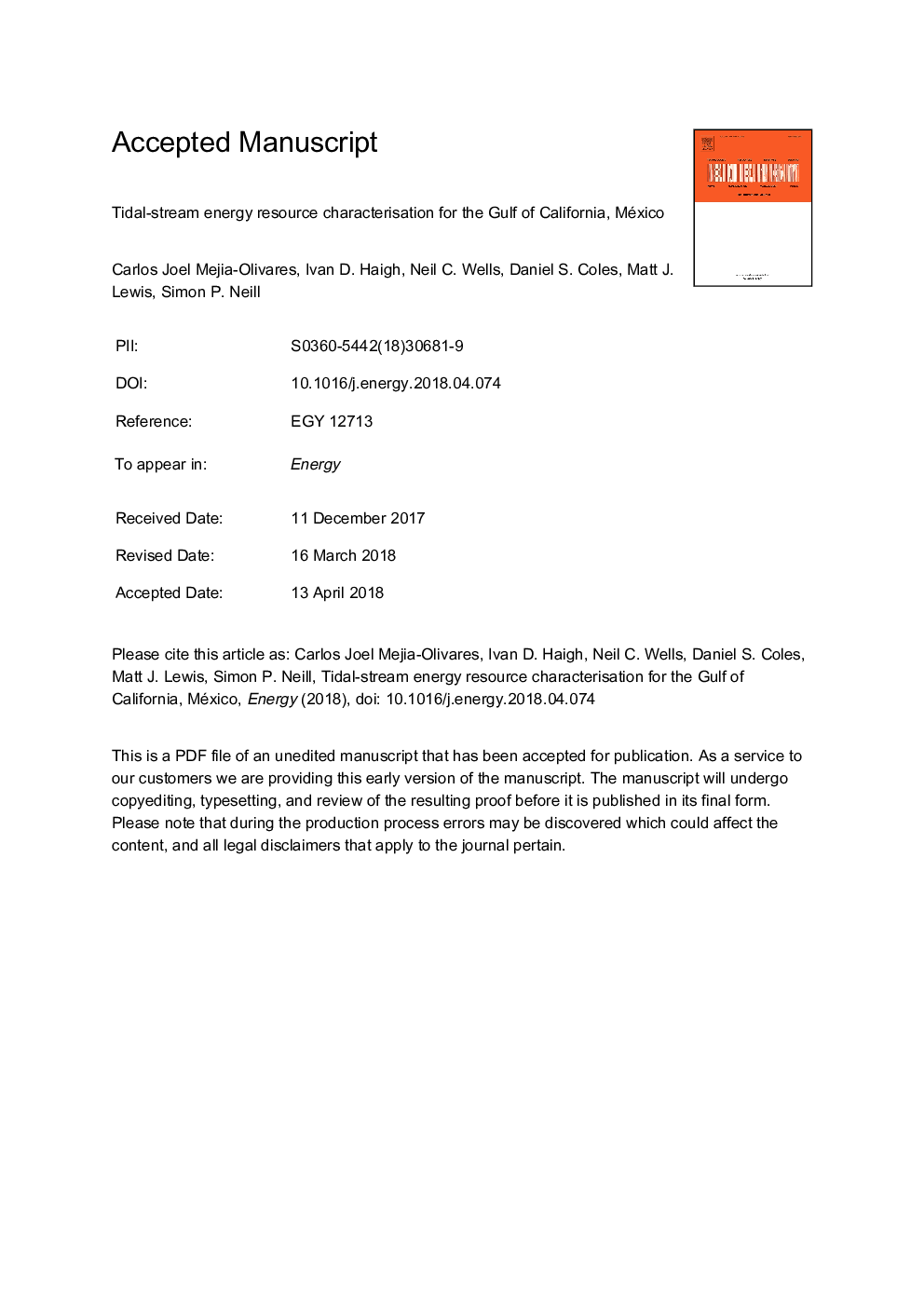| Article ID | Journal | Published Year | Pages | File Type |
|---|---|---|---|---|
| 8071362 | Energy | 2018 | 38 Pages |
Abstract
There has been a growing interest in tidal-stream energy, with most past studies focusing on assessing the potential resource of sites with fast tidal currents in relatively shallow water. Regions with less energetic tidal currents, but in deeper waters, have been overlooked. One potential tidal-stream energy region, which fits this categorization, is the Gulf of California. In this paper we quantify the theoretical tidal-stream energy resource in this region. The resource is estimated with an unstructured depth-averaged hydrodynamic model. We find that the highest flow speeds of 2.4â¯m/s occur in the channel between San Lorenzo and San Esteban Island, and three lower-velocity potential sites are identified in the channels between: (1) Baja California Peninsula and San Lorenzo Island; (2) San Esteban and Tiburon Islands and (3) Baja California Peninsula and Angel de la Guarda Island. Although peak kinetic power density in these regions is found to be relatively low (â¼3-6â¯kW/m2), the large water depth (100-500â¯m), results in an undisturbed theoretical annual mean power of between 100 and 200â¯MW. We therefore find the tidal energy resource to be large, but new turbine technologies would be required to exploit these 'next generation' resource regions.
Keywords
Related Topics
Physical Sciences and Engineering
Energy
Energy (General)
Authors
Carlos Joel Mejia-Olivares, Ivan D. Haigh, Neil C. Wells, Daniel S. Coles, Matt J. Lewis, Simon P. Neill,
